XLR8R Hits Seattle’s Decibel Festival, Chows BBQ With Benga and Willits, and Scoops Sounds With Lusine and Pezzner.
Words and reporting by Jefferson Petrey and Ken Taylor Last week’s Decibel Festival, the sixth […]
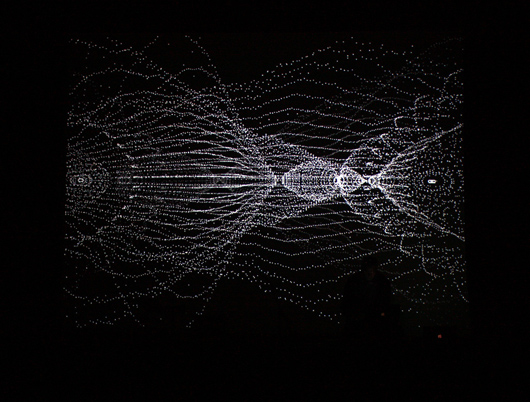
Words and reporting by Jefferson Petrey and Ken Taylor
Last week’s Decibel Festival, the sixth installment of the electronic music gathering, held from September 24 til the 27, saw the XLR8R crew working overtime and double duty on the streets of Seattle, hitting up events from sun down til sun up and then some, and dropping in with producers Lusine and Pezzner for an upcoming episode of XLR8R TV. In fact, before we could even settle in to the city’s idyllic environs, we were already chowing on BBQ with Benga and Christopher Willits. (Yes, BBQ in Seattle—not half bad!) The rest of the weekend was a bit of a blur, but with the help of Seattle-based scribe Jefferson Petrey, we’ve done our best to piece it all back together.
Benga and Christopher Willits
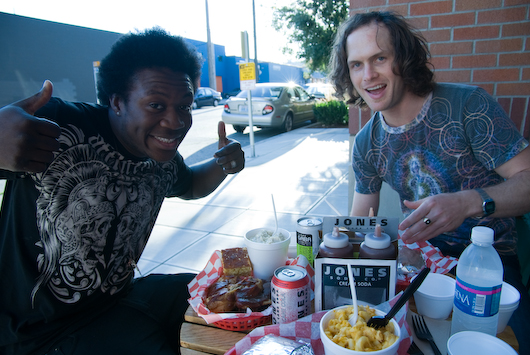
Thursday September 24
After gathering our wits and our passes, we first hit up Thursday’s Ghostly International opening party at the Seattle Art Museum, where folks like Michna, Lusine, and Clark Warner warmed the just-easing-into-it crowd in the front room, while Tycho, The Sight Below, and Lissom wowed those in the auditorium with audio-visual treats.
Tycho, by Kochs.org
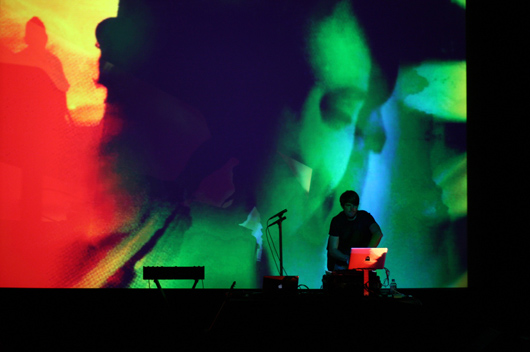
Back up the hill at Neumo’s, Rod Modell and Stephen Hitchell of Echospace drifted into the mix from far-flung sonic horizons on a buoyant mix of analog hardware and digital editing, producing headily atmospheric, humid, dub-heavy sounds with deep bass and roots-informed pointillist techno rhythms. They left Mad Professor with quite an act to follow, and by many accounts, the legendary dub master didn’t quite make good. He delivered a set of relatively predictable dubbed-out beats and mic chat, even calling one female fan on stage to sing a few clumsy lines, but he still failed to set the crowd on fire.
Mad Professor
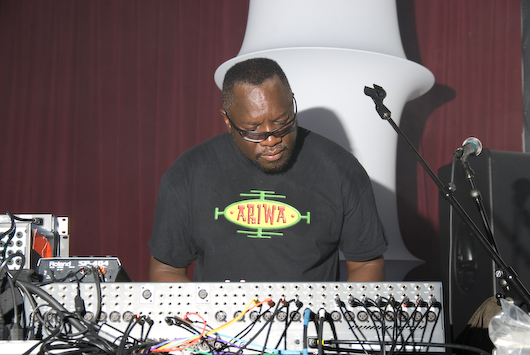
As we jumped between Neumo’s and Sole Repair (conveniently steps across the street), we caught quick glimpses of Mikael Stavostrand and Derek Plaslaiko playing to a very thick and sweaty crowd, before tying up the evening with Dubstep prince Benga, who did manage to both set the patchouli-scented masses on fire and get their nostrils wobbling with some ridiculously heavy and loud bass.
Benga
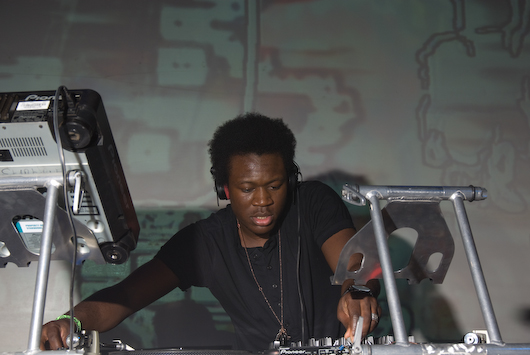
Friday September 25
While Ken was out riding the Sound Transit light-rail system and grabbing found sounds with Lusine and Pezzner, Jefferson was holding it down at the Optical 1: Immersion audio/visual event, where Decibel had smartly attempted to bridge the gulf between headphone music, the concert theater, the art gallery, and the club. Type artist William Fowler-Collins, his feet strewn with effects pedals, guitar strung over his shoulder and laptop on table, ushered in quiet tones, feedback, and ominous extended drones as a soundtrack to abstract video narratives on the Cold War and the Nuclear Arms Race. Frank Bretschneider‘s set that followed was a stunning contrast of hi-resolution audio-responsive digital geometry that leapt from the screen in precise time with his hyper-dynamic musique concrete textures, rhythm patterns, and silence used to employ the starkest of musical punctuation. This almost shocking visceral immersion from Bretschneider was followed by Christopher Willits putting in a significantly more restrained set than fans of his 2008 Ghostly international release might have expected. Reduced to just a pallette of tones, snippets of melody, and minute rhythmic pitter-patters sourced from guitar, his take on the night’s theme of immersion was matched with a visual element: consciousness moving through nature, whether under California’s redwoods, out on the open sea, or following trails of green pushing up through the urban scape.
Frank Bretschneider’s a/v performance
Over on Capitol Hill, minimal legend Rob Hood offered a stark contrast to the night’s Optical proceedings by pummeling the early-evening crowd with some powerful techno. At the neighboring Sole Repair, not quite as packed as the night before, we caught an equally energetic set by [a]pendics.shuffle before jumping back and forth to witness Wighnomy Brothers taking the Neumo’s crowd to town with their hefty house and techno mix. From there, it was off to the far-flung Church of Bass (our vote for worst club name on the west coast), where XLR8R friends Qzen and Clark Warner took late-night revelers into the wee hours. A bit worse for wear, and with two nights ahead of us still, the idea of pacing ourselves trumped the reported great early-morning sets by Drumcell and Bruno Pronsato.
Wighnomy Brothers
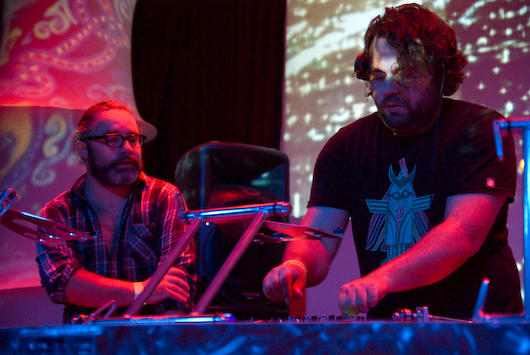
Saturday September 26
We kicked off Saturday with Optical 2: Beauty in Binary, where a subtle, quiet-ish female-heavy bill saw early performances by The Dead Texan’s Christina Vantzou and Seattle’s own Iller Aint. Tokyo-to-New York-and-back-again transplant Sawako, mirroring her real-time visual work, spread a tapestry of the thinnest fibers of melody throughout the space, and punctuated them with vocal wisps and the miniature pop structures.
Truckasaurus
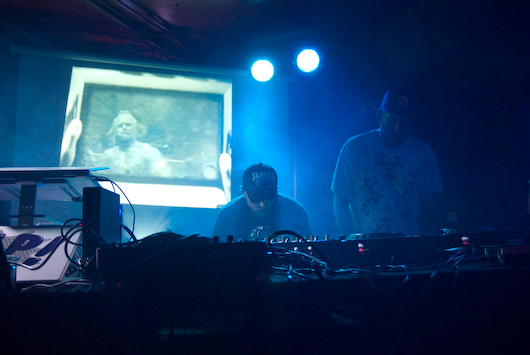
We stopped in to Chop Suey for a nice bit of four-man electro-IDM from Truckasaurus before landing at Neumo’s (what seemed to be ground zero for DB’s many events) just in time to finally get some sit-down time with XLR8R celeb blogger and Radio One queen Mary Anne Hobbs (who was documenting her US travels for us over the course of the last few weeks) in the green room downstairs. Back up those stairs Daedelus absolutely slayed the crowd with his mutton chops, sweat-soaked Victorian get-up, and monome controller. When the former XLR8R cover star mashed up Dorian Concept’s “Trilingual Dance Sexperience” and Bobby Caldwell’s ’80s soul classic “What You Won’t Do For Love,” it felt like the room was gonna lift off. Faced with the sufficient challenge of following that one up, Mary Anne Hobbs still managed to get the crowd eating out of her flailing hands, and held them much more tightly than dubstep diplomat Mala, who seemed to lose a bit of the momentum with a set that was a touch too dark for the ready-to-party gatherers.
Daedelus
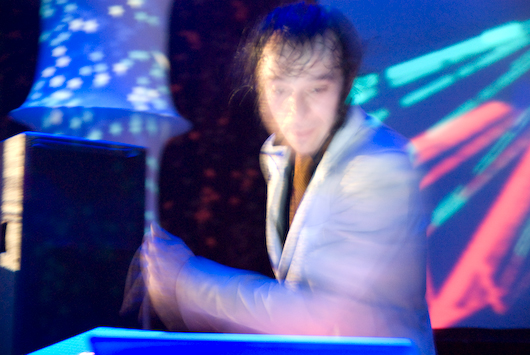
Eschewing another crosstown cab ride to Church of Bass, we opted for the nearer-by Electric Tea Garden after-party, where local crew From 0-1 (Sone, Cyan Wave, John Massey) held down the decks with a perfect blend of heady, peak-hour techno. Itinerant reporter Brandon Ivers tells us, though, that across the way was the place to be, where Move D and Martyn took full advantage of those prime 4 a.m. and 6 a.m. slots, when inhibitions are long gone and hallucinogens are in full effect.
Sunday September 27
At Sunday’s Optical 3: Ameritronica, Portland’s Keith Kenniff (better known for his elaborate and gorgeous multi-instrumental electronic and classical intersections as Helios) performed under his piano-specific moniker, Goldmund. All muted tonalities, Erik Satie-esque keyboard play, and diminished, elegiac melodies, his time at the grand piano was brief and perfect in its expressive succinctness.
Goldmund, by Kochs.org
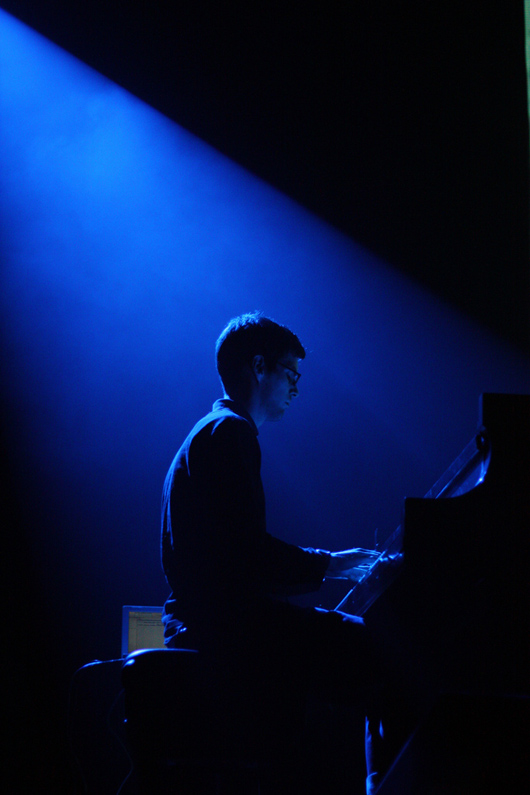
Kranky’s Benoit Pioulard, set up amongst a circle of microphones, effects pedals, guitar, and accordion, strummed out the quiet, restrained psych-folk tunes he’s made his own in the past few years. One of Decibel’s highlights came in the midst of the following set, as the New York duo Mountains (a.k.a. Koen Holtkamp and Brendon Anderegg) rolled through a flowing mass constructed from guitar, effects, electronics, non-musical objects, and sampled organ tones, and launched into a blindingly gorgeous Americana-style Indian raga.
Benoit Pioulard, by Kochs.org
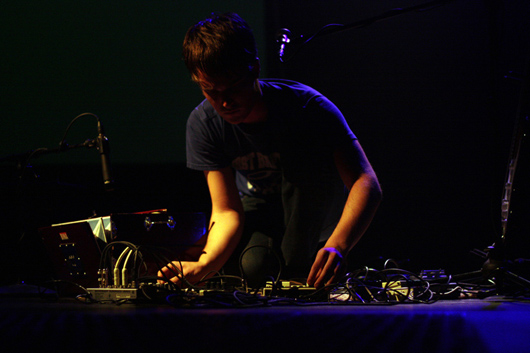
Later in the evening, Tim Exile, taking a page from fellow Warp Records compatriot Jamie Lidell, turned his stage show one of all improv’d, MC’d mania and hyperactive MIDI-controller tweekery. Throwing himself into the dancefloor with a remote joystick to control his onstage electronics, Exile danced through the audience, spastically firing off missiles of beats and screaming, shredded synth lines.
Tim Exile, by Kochs.org
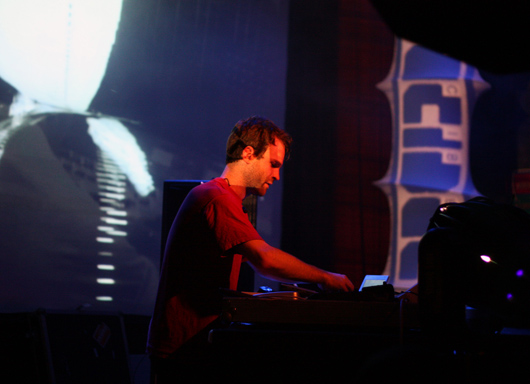
Surprisingly upping the ante, Klang Elektronik stalwarts and German techno-hijinksers Alter Ego took the stage, immediately adopting the most potent weapons in the rock n’ roll arsenal—the riff and the hook—and realizing their single-minded agenda to make post-shuffle techno seriously, seriously rock. With Alter Ego’s distortion, feedback, and the hook—those powerful body-activating gestures so honed over decades of rock n’ roll—now taken out on the town for some twisted, technicolor, hyper-geometric, janky techno workouts, the audience could not resist. It’s no wonder their biggest, most globally played single and the festival’s closing note, was “Rocker” in its most tweeked, unhinged, blasting glory. Rocking they did. Us? We were leveled by a euphoric, elated, and exhausted sense of finality… possibly with the low-lit illumination of that kindled anticipation for Decibel 2010 already unconsciously in mind.

